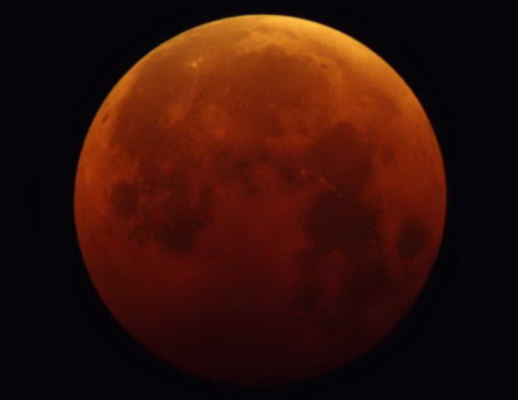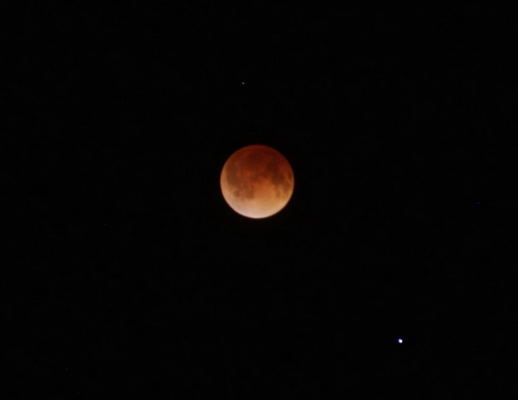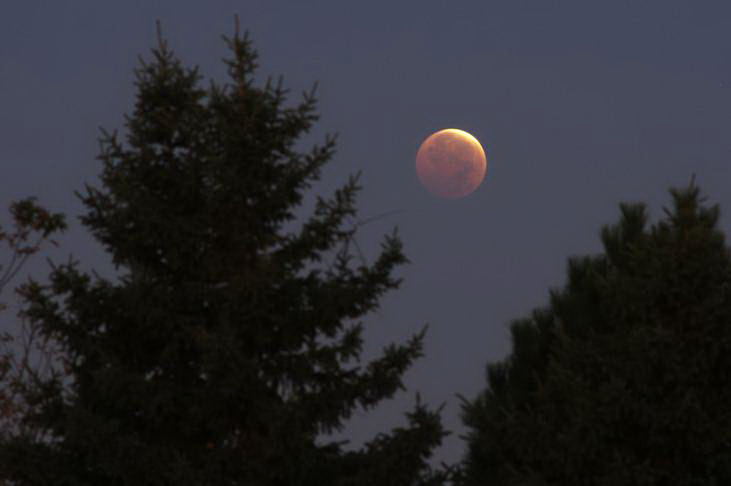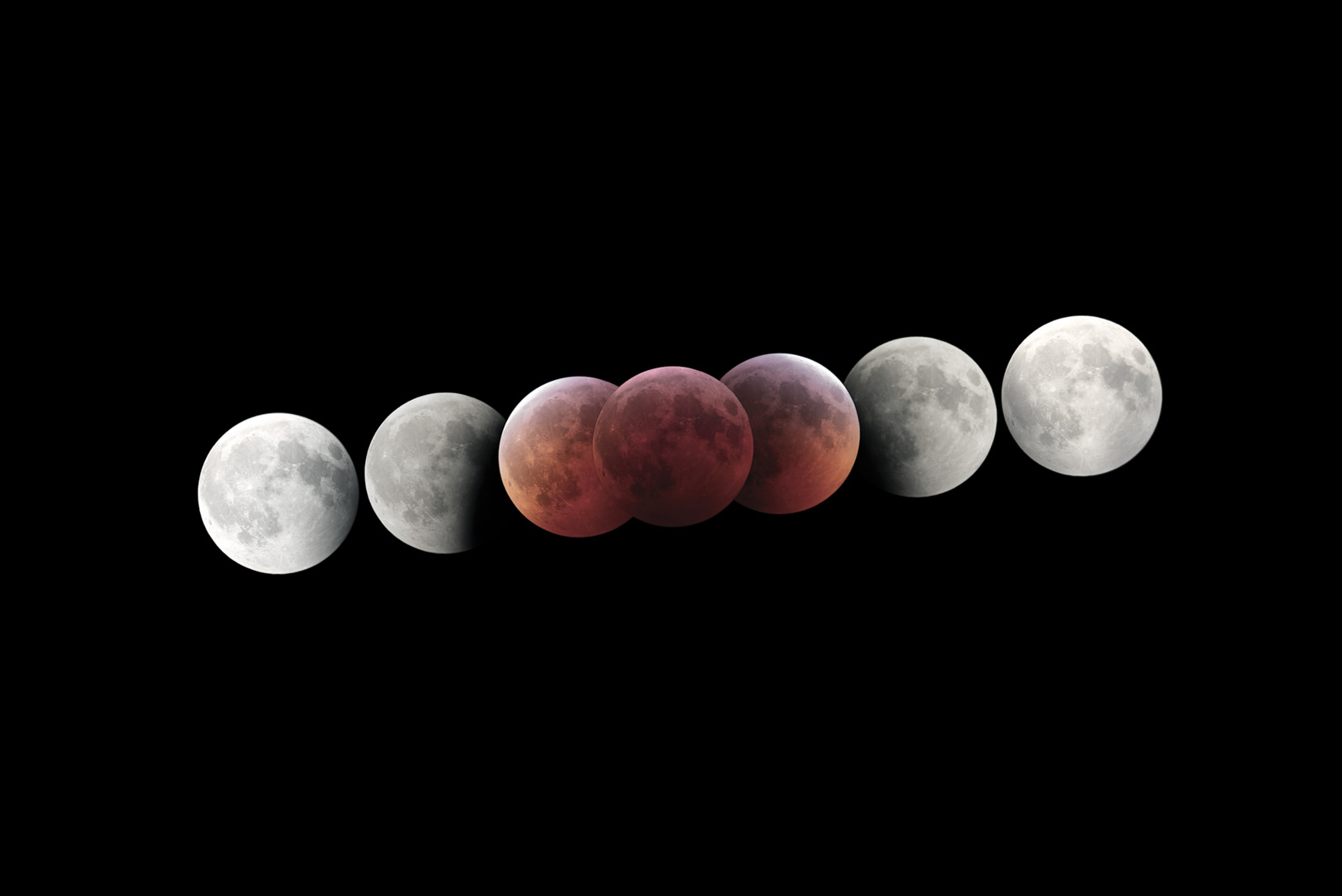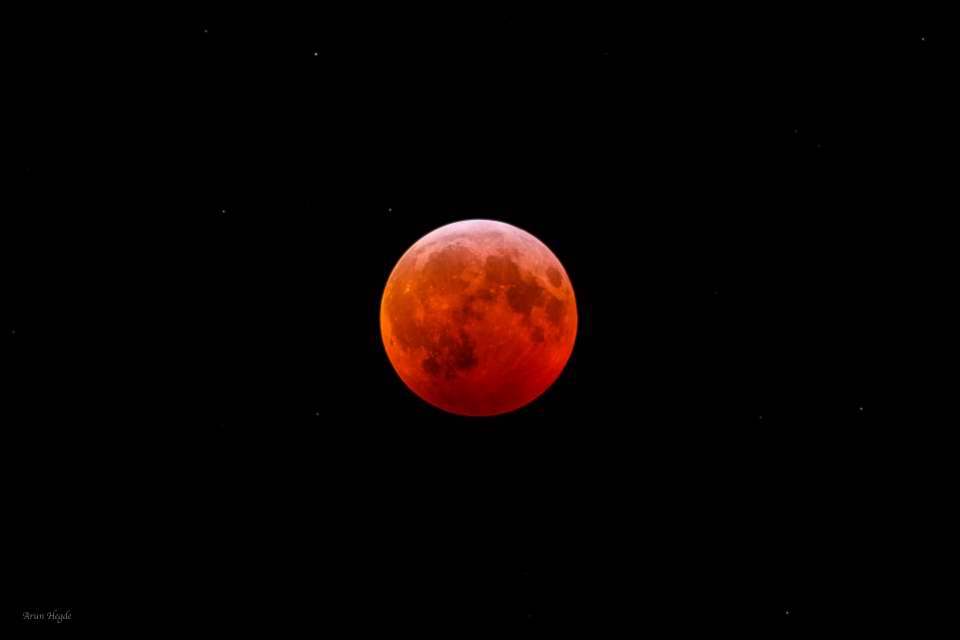Total Lunar Eclipse - 2022
What You Need To Know
On the early morning of November 8, 2022, most observers across the United States have the opportunity to view a total lunar eclipse, weather permitting! From Wisconsin this eclipse will occur in the very early morning. Most of the complete eclipse will be visible although at about the time the partial phase ends the moon will be right at the horizon. But the total phase of the eclipse will be visible unless you have a very poor western horizon. The next total lunar eclipse visible from Wisconsin won't occur until March 14, 2025!
What is it?
A lunar eclipse happens when the moon's orbit takes it into the shadow of the Earth. This means it only happens at the time of the full moon. This is opposed to a solar eclipse where the Earth wanders into the shadow of the moon and happens at the time of the new moon.

Is it safe to view?
Viewing a lunar eclipse (partial or total) is entirely safe! A solar eclipse, on the other hand, is notoriously unsafe and special precautions need to be observed. This is why you need to know the difference between a Lunar and Solar eclipse.
Eclipse Diagram
At the right is a Lunar Eclipse Diagram. There are actually two parts of the Earth's shadow: the inner dark shadow, the umbra, and the lighter outer one, called the penumbra. Umbra is Latin meaning shade or shadow. The "Pen" in Penumbra is from the Latin paene which means almost.
One of the best aspects of any lunar eclipse is if there's one going on and the moon is above the horizon, you'll be able to see the eclipse!
Phases of a total lunar eclipse as photographed by Paul Borchardt during the one that occurred on September, 2015. The middle picture is the total phase, whereas the outer 4 are the partial phase
There are actually 3 kinds of lunar eclipses: penumbral, partial, and total.
A penumbral eclipse occurs when the moon wanders into the penumbra. If you were on the moon looking toward the sun, you'd see a partial solar eclipse. So the moon is still being fairly illuminated so from Earth we see a very slight dimming. But the dimming is so little it is hardly noticeable.
A partial eclipse occurs when the moon wanders into the umbra, the dark shadow cast by the Earth. As seen here on Earth, you can see that curved dark shadow moving over the face of the moon. (The 4 outer photos.) The curve, of course, is the disk of our planet. (This curved shadow was a clear sign by the Greeks that the Earth was a sphere. It also allowed them to make a good approximation of the distance to the moon.) Whenever there is partial eclipse, it will be proceeded and followed by a penumbral one.
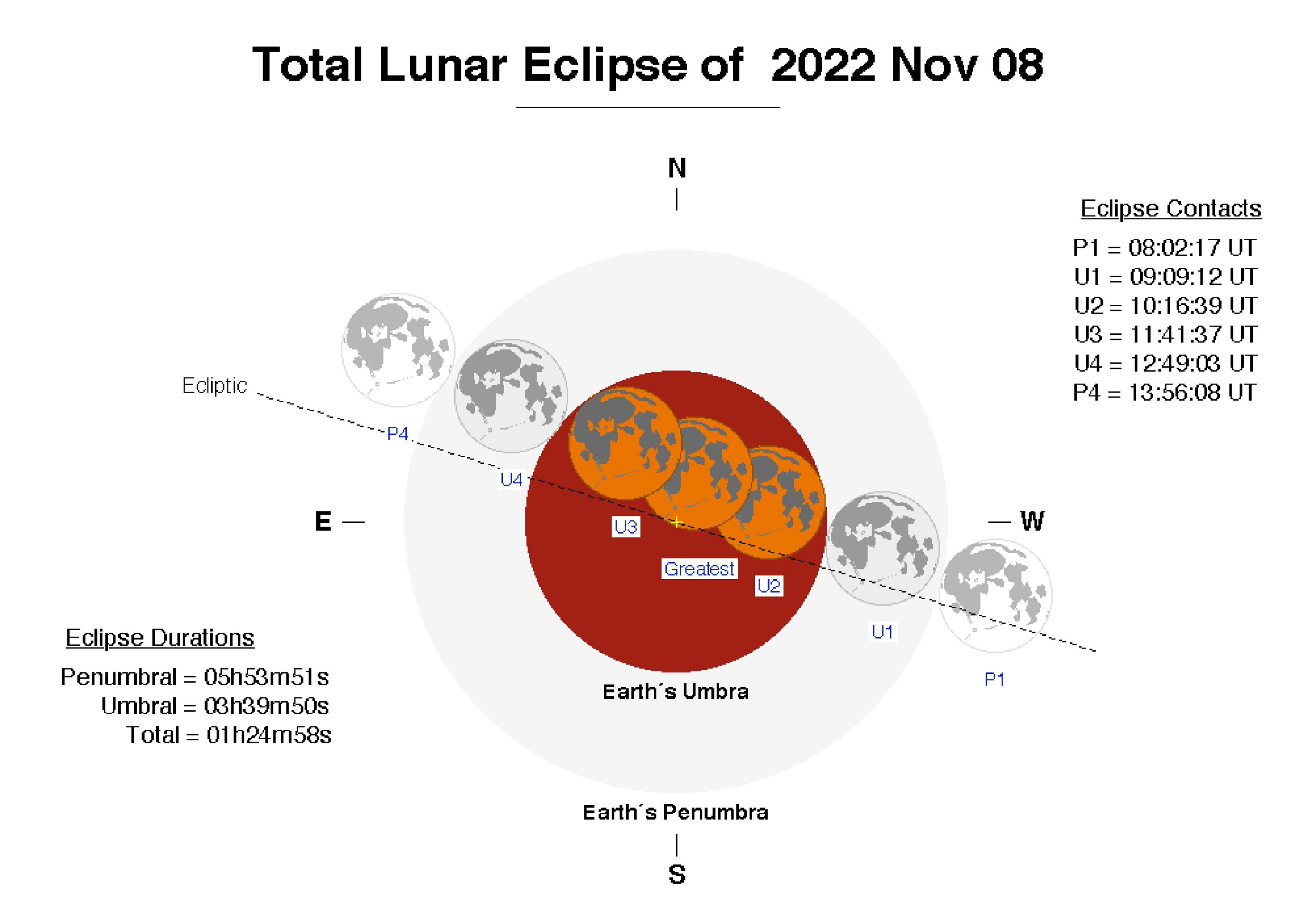 A
total eclipse occurs when the entire moon wanders into the umbra. Though it
would seem looking at the partial phases that a total eclipse would mean the
moon would be entirely dark and hence, not very interesting, but as
viewed from the moon there is still light coming from light bending from the Earth's atmosphere -
basically the colors of our sunsets so the moon actually looks orange to red
in color. This is why the total lunar eclipse is often called the "blood"
moon.
A
total eclipse occurs when the entire moon wanders into the umbra. Though it
would seem looking at the partial phases that a total eclipse would mean the
moon would be entirely dark and hence, not very interesting, but as
viewed from the moon there is still light coming from light bending from the Earth's atmosphere -
basically the colors of our sunsets so the moon actually looks orange to red
in color. This is why the total lunar eclipse is often called the "blood"
moon.
Note the times shown on this diagram are in Universal Time (UT).
When there is total eclipse, there will also be partial eclipse proceeding and following.
Phases of the eclipse - November 8, 2022
1. Start of partial eclipse: 3:09AM
2. End of partial, start of total eclipse: 4:16AM
3. Mid-Eclipse: 4:59AM
4. End of total, start of partial eclipse: 5:41AM
5. End of partial eclipse: 6:49AM
(All times CST)
What You Need to See the Eclipse
You need nothing more than your own eyes! As stated earlier, viewing a lunar eclipse is entirely safe so no eye protection is needed (unlike a solar eclipse where you must take extreme precautions.) Of course you need to be able to see the moon. That means clear enough weather and an unobstructed view. You don't need to see much of the sky, just as long as the moon is in view. It goes without saying that because this eclipse is happening in January, you will probably have to dress warm, unless you are lucky enough to see it through a window.
Though you can see this event with your eyes, if you have binoculars we highly recommend having them to augment the view. And if you have a telescope, better still!
Total Lunar Eclipse - September 27, 2015
World View Eclipse Diagram
 This diagram
shows the visibility of the November 8th eclipse. The
middle white area is where the entire eclipse is visible. The dark gray
area is where no part of the eclipse will be seen because the moon will
be entirely below the horizon. The other areas indicate areas where only
some of the eclipse will occur when the moon is visible.
This diagram
shows the visibility of the November 8th eclipse. The
middle white area is where the entire eclipse is visible. The dark gray
area is where no part of the eclipse will be seen because the moon will
be entirely below the horizon. The other areas indicate areas where only
some of the eclipse will occur when the moon is visible.
As you can see the Milwaukee is not quite in the white area so the complete eclipse will not be visible. However, the total phase of the eclipse will be completely visible.
Click here for an explanation of the Saros Cycle from Wikipedia.
:


